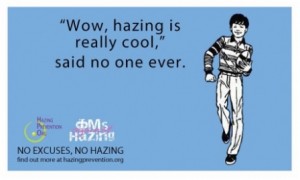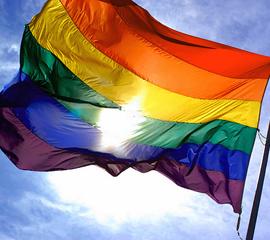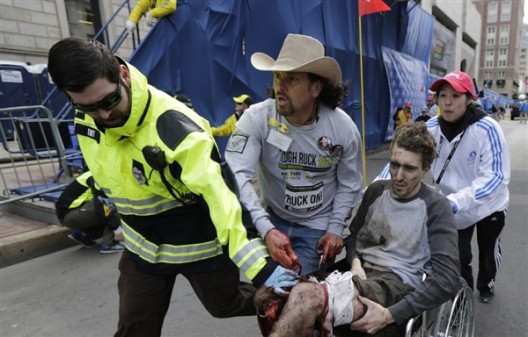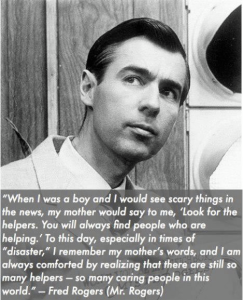Posts tagged ‘stress’
Understanding Borderline Personality Disorder
The diagnosis of “borderline personality disorder” unfortunately carries with it much stigma. A “personality disorder” may carry negative connotations and the term “borderline” can conjure an image of an unstable person precariously straddling an imaginary line of what would be considered a “normal,” stable personality. BPD is a mental health issue just like anxiety and depression, yet it does not receive the same level of recognition.
Eight to 10 percent of those with the disorder commit suicide, which is a rate 50 times higher than in the general population. More than 70 percent of individuals with BPD will attempt suicide at least once, with rates peaking in individuals in their 20s and 30s.
Because of the dangerous consequences of BPD, it is important to increase understanding and encourage those with symptoms to seek therapeutic help, particularly in the vulnerable young adult population.
See how to recognize symptoms in my article appearing in The Hullabaloo.
More Information:
The Hidden Harms of Hazing
Hazing is a practice often talked about on college campuses, particularly when students are considering which organizations to join. Despite strict rules banning this behavior, hazing still occurs regularly and is often considered a part of campus culture. The National Study of Student Hazing, including responses from 11,000 undergraduate students at 53 colleges and universities, found that more than half of college students involved in campus organizations experience hazing.
Why does this tradition still persist, despite strict rules against it? What are the hidden psychological dangers of hazing? What can college campuses do about it? Check out my latest article in The Hullabaloo here!
Hazing Resources:
Self-injury is common and treatable in college
As a psychiatry resident working in New Orleans, I have the opportunity to treat a wide range of interesting people. I also have the great opportunity to work with college students when they show up to the Tulane emergency room in crisis. Something that I often see in these students and other young adults is a pattern of self-injury.
What may seem strange or scary to some, is a daily impulse for others. Check out my latest column in The Hullabaloo: 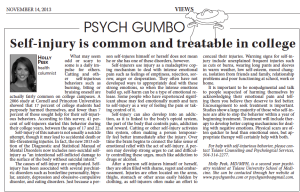
LGBTQ Mental Health: Facing the Double Stigma
The LGBTQ community is a population that is faced with stigma and stereotypes. Because of this, those in this minority population are often more susceptible to mental health issues and are at higher risk for suicide. In fact, LGBTQ adults are 2.5x more likely than heterosexuals to have had a mental health disorder related to mood, anxiety or substance abuse, in their lifetime. Furthermore, the rates of suicide attempt among LGBTQ youth are 20-40% higher than among non-LGBTQ youth.
In this week’s Psych Gumbo, Dr. Holly Peek discusses mental health issues of the LGBTQ community with special guest, Dr. Myo Thwin Myint. Dr. Myint is a physician with training in pediatrics, general psychiatry and child & adolescent psychiatry. Among others, his interests includes LGBTQ mental health.
Here are some recommended resources for more information on LGBTQ mental health:
Story of a Boston Marathon Survivor
There has been a lot of media coverage about the Boston Marathon bombings and the violent events that occurred during that week. Now that we are a few weeks away from the terrorist event, it’s important to realize what many victims of the attack may be experiencing emotionally. Dr. Holly Peek and Dr. Mordi Potash interview New Orleanian and Boston Marathon runner, Tim Phillips. Tim was at the second bomb site during the explosion and spent 40 agonizing minutes searching for loved ones after the attack. Hear his story and learn more about the emotional side of the Boston Marathon terrorist attack.
Emotional Recovery after the Boston Bombing
The five days of terror in Boston began with a horrific bombing and ended with a police shoot out, a capture of a terrorist, and finally celebrations in the street. For the victims, their families, and the people living in Boston, the fear, uncertainty and anger that lasted for those five days undoubtedly caused a great deal of mental distress. For the rest of us glued to our televisions watching non-stop coverage of the terrorist attack, the feelings we experienced were equally unsettling.
Victims and witnesses to the violent events of last week may be faced with a range of negative emotions. Not all negative feelings are pathological. It’s natural to feel anger, frustration, helplessness, grief, sadness or fear after a terrorist event. Acute stress disorder and post traumatic stress disorder (PTSD) occur when a person has experienced or witnessed a traumatic event and felt an intense fear or helplessness. They may feel detached or be described as “being in a daze” either while the event is happening or afterwards. They will frequently re-experience the event through recurrent dreams, thoughts, or flashbacks and often avoid recollecting the trauma either by avoiding conversations, people, places, or activities they may associate with the event. They have symptoms of increased arousal, including difficulty sleeping, irritability or outbursts of anger, difficulty concentrating or an exaggerated startle response. Symptoms of Acute Stress Disorder begin shortly after the traumatic event and the symptoms last for less than four weeks. Symptoms of PTSD, on the other hand, can present shortly after or months after the event and the symptoms may persist for years.
For the rest of the country, witnessing the events play repeatedly on television may not be enough to induce Acute Stress Disorder or PTSD, but it can certainly cause a sense of uneasiness and a reminder that there are people out there who commit evil acts when they are least expected. Some psychologists have described disasters caused by terrorism such as 9/11 and now the Boston bombings as “collective traumas.” Because of the large scale and unpredictability, collective traumas serve as a reminder that we are all vulnerable to death and harm and we have limited capabilities to protect those we love, thus threatening our sense of security in everyday life. In order to avoid feelings of uneasiness or paranoia, it’s important to keep the perspective that on any given day, the likelihood another attack will occur and that it will happen to you personally is quite low and it’s important to continue engaging in normal activities.
It’s also important to realize for every evil terrorist, there are millions of good people. The number of heroes that emerged in Boston were exponentially higher than the two hateful young men who inflicted so much pain. On the news, we heard stories of all the helpers that emerged during a time when many Bostonians needed help the most, both physically and emotionally. That in itself is reason enough to instill a sense of hope and comfort.

